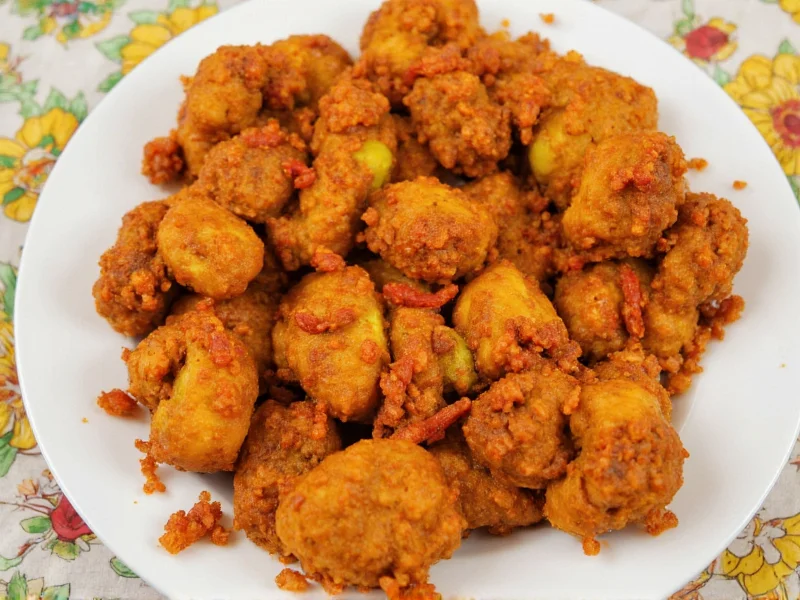The term “tikka” refers to boneless chunks of meat or paneer marinated in a signature spice blend and traditionally cooked in a tandoor (clay oven). Understanding tikka flavor requires examining its essential components, regional variations, and the culinary science behind its distinctive taste profile that has captivated palates worldwide.
Core Components of Authentic Tikka Flavor
Authentic tikka flavor emerges from a precise balance of ingredients working in harmony. Unlike many Indian curries served in sauce, tikka focuses on flavor penetration directly into the protein through marination. The foundation consists of:
- Yogurt base – Provides tanginess while tenderizing meat through enzymatic action
- Ginger-garlic paste – Delivers pungent depth and aromatic complexity
- Garam masala – The essential spice blend containing cardamom, cloves, cinnamon
- Kashmiri red chili powder – Imparts vibrant color with mild heat
- Lemon juice or amchoor (mango powder) – Enhances tanginess without dairy sourness
Professional chefs emphasize that the quality of spices significantly impacts the final tikka flavor profile. Freshly ground whole spices generally produce superior results compared to pre-ground alternatives, as volatile aromatic compounds degrade over time.
Spice Profile Breakdown
Understanding how individual spices contribute to tikka flavor helps home cooks adjust recipes to personal preferences. The following table details key spices and their sensory contributions:
| Spice | Flavor Contribution | Traditional Proportion |
|---|---|---|
| Garam Masala | Warm, complex, slightly sweet | 1.5-2 tbsp per pound |
| Kashmiri Chili | Vibrant color, mild heat | 1-1.5 tbsp per pound |
| Ground Cumin | Earthy, nutty, slightly smoky | 1 tbsp per pound |
| Coriander | Citrusy, floral, balancing | 1 tbsp per pound |
| Turmeric | Earthy, slightly bitter, golden hue | 1 tsp per pound |
The distinctive tikka flavor develops through chemical interactions during marination. Yogurt's lactic acid breaks down protein fibers, allowing spices to penetrate deeper. Meanwhile, fat-soluble compounds in spices bind with meat fats, creating layered flavor complexity that intensifies during high-heat tandoor cooking.
Regional Variations Across South Asia
While tikka originated in Punjab, regional adaptations have created distinct tikka flavor interpretations across South Asia:
- Northern India/Pakistan – Features heavier use of garam masala with pronounced cardamom notes
- Kashmiri variation – Incorporates fennel and dry ginger for sweeter, more floral profile
- Gujarati adaptation – Adds subtle sweetness with jaggery or mango powder
- South Indian interpretation – Uses curry leaves and mustard seeds for earthier profile
These regional tikka flavor differences reflect local agricultural products and historical trade routes that influenced spice availability. Traditional Punjabi tikka maintains the most balanced profile, while coastal variations often incorporate coconut or tamarind for additional complexity.
Distinguishing Tikka From Similar Dishes
Many confuse tikka flavor with related Indian dishes, but key distinctions exist:
- Tikka vs. Tandoori – Tandoori dishes use similar marinades but often include food coloring and more chili; tikka specifically refers to the cubed preparation
- Tikka vs. Butter Chicken – Butter chicken features a tomato-cream sauce; tikka flavor focuses on the marinated protein itself
- Tikka Masala – This British creation combines tikka-style chicken with spiced tomato gravy, creating a hybrid flavor profile
Authentic tikka flavor should shine through without requiring additional sauce. The marinade's complexity should be evident in each bite, with balanced tanginess, aromatic spices, and subtle heat that enhances rather than overwhelms the primary ingredient.
Common Flavor Mistakes and Solutions
Many home cooks struggle to achieve authentic tikka flavor due to these common errors:
- Insufficient marination time – Minimum 4 hours required; 12-24 hours ideal for full flavor penetration
- Using low-fat yogurt – Full-fat yogurt provides necessary fat content to carry flavor compounds
- Over-marinating with acidic ingredients – Excessive lemon juice can make meat mushy
- Cooking at incorrect temperature – Requires high heat (400°F+) to properly sear and develop flavor
Professional chefs recommend using metal skewers instead of wooden ones for more even cooking, which preserves the delicate tikka flavor balance. Additionally, allowing marinated protein to reach room temperature before cooking ensures more even heat distribution and optimal flavor development.
Perfecting Tikka Flavor at Home
Without a traditional tandoor, achieving authentic tikka flavor requires technique adjustments:
- Use full-fat Greek yogurt as marinade base for proper texture
- Add 1 teaspoon of baking soda per pound of meat to enhance browning
- Preheat oven to maximum temperature with convection setting if available
- Place meat close to broiler element for intense radiant heat
- Finish with a sprinkle of chaat masala for flavor complexity
The ideal tikka flavor should feature a slightly charred exterior with juicy, flavorful interior. Properly executed, the marinade creates a thin crust that locks in juices while allowing the distinctive tikka flavor to permeate throughout the protein. For vegetarian adaptations, paneer requires shorter marination (2-4 hours) to prevent disintegration while still absorbing flavor.











 浙公网安备
33010002000092号
浙公网安备
33010002000092号 浙B2-20120091-4
浙B2-20120091-4